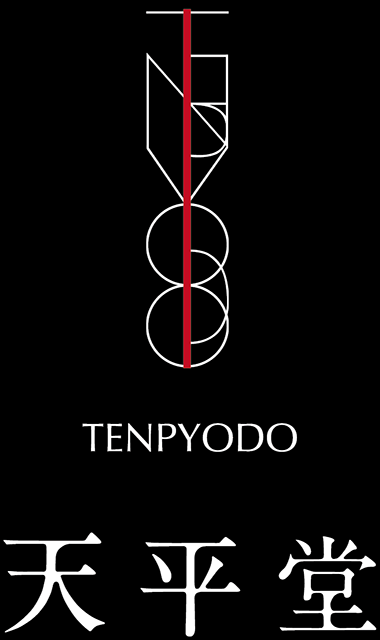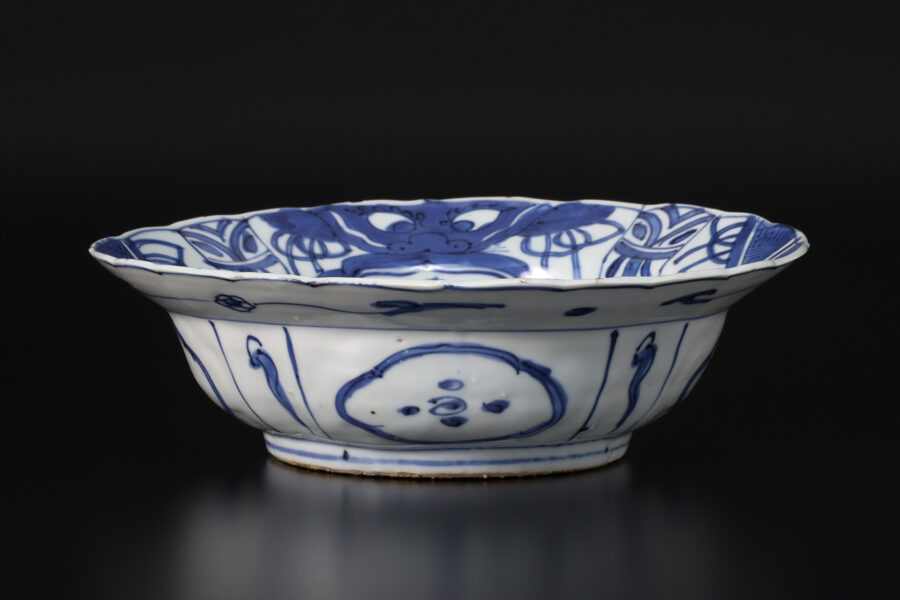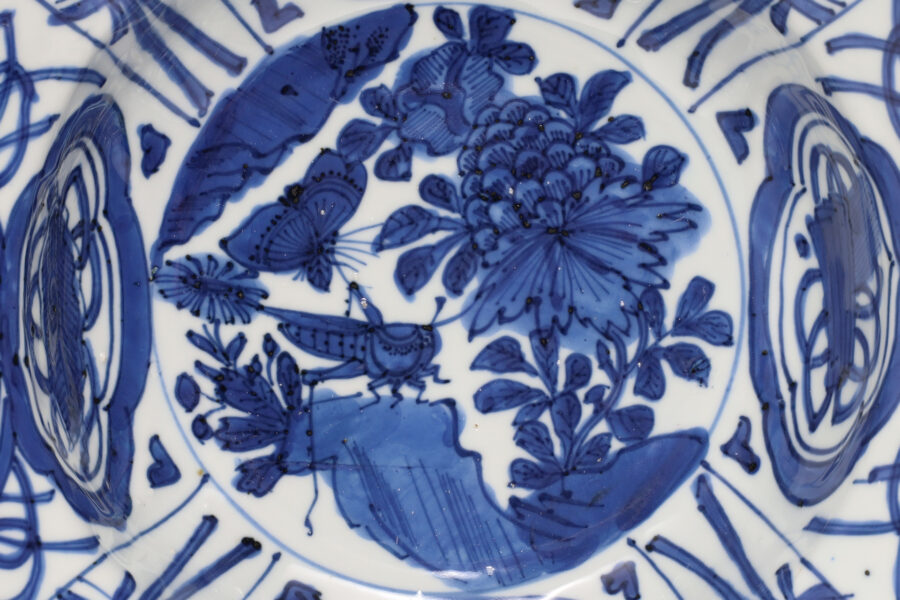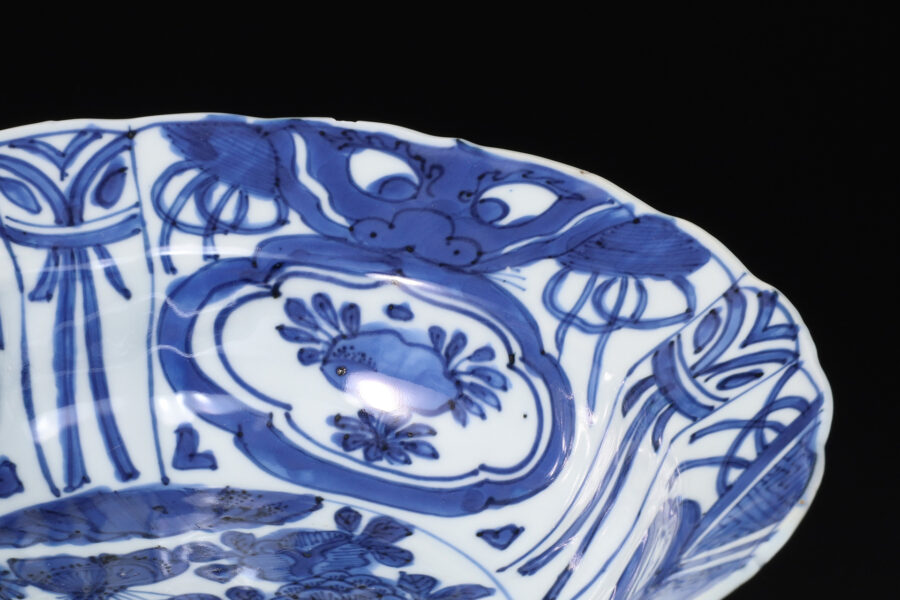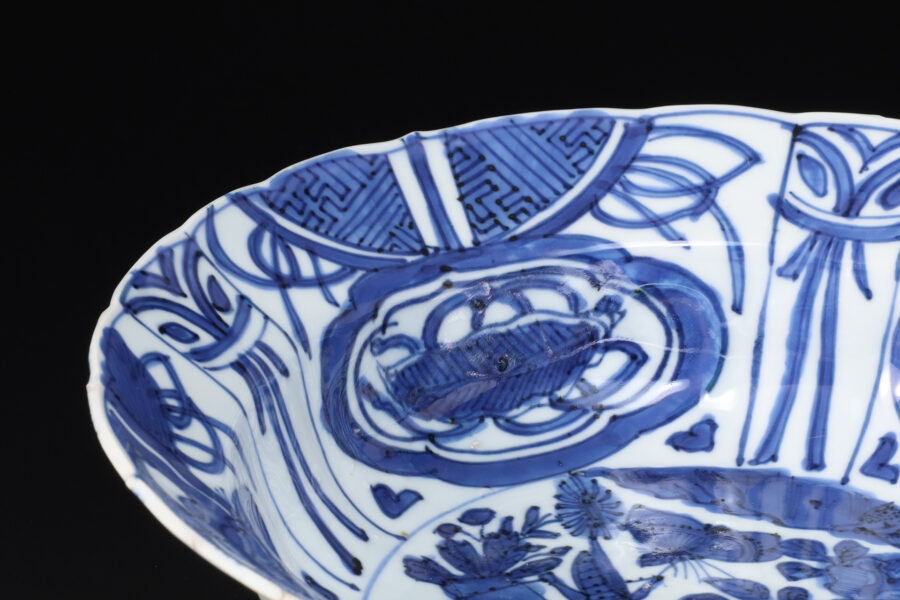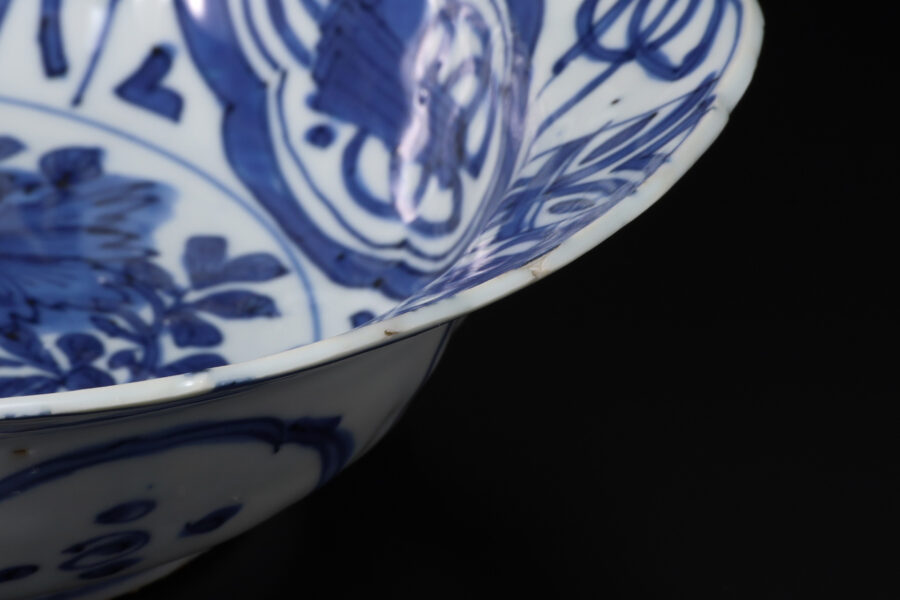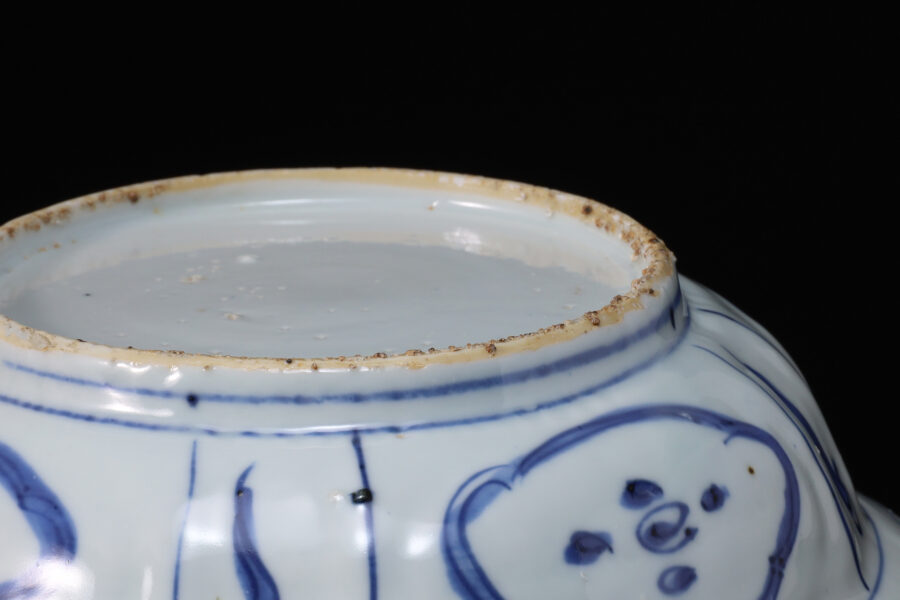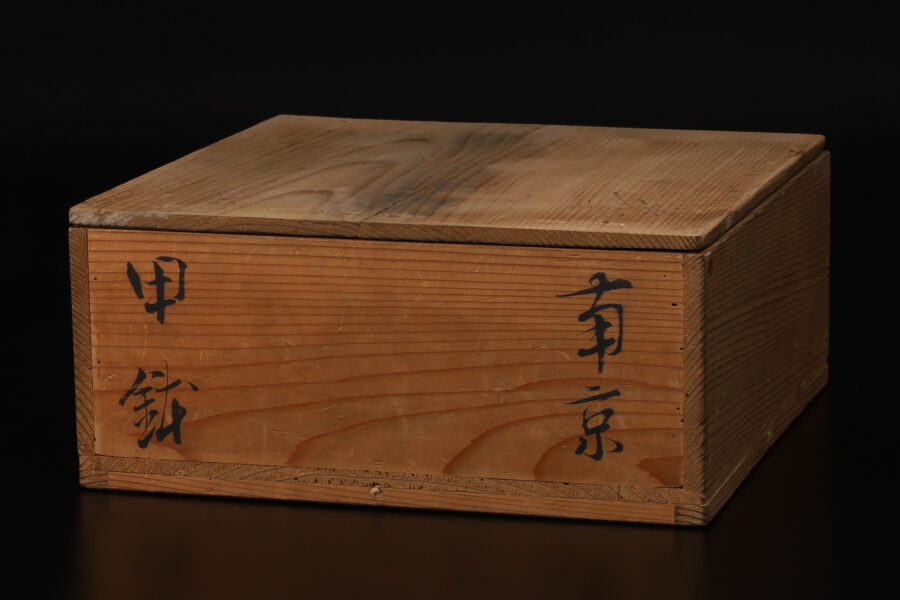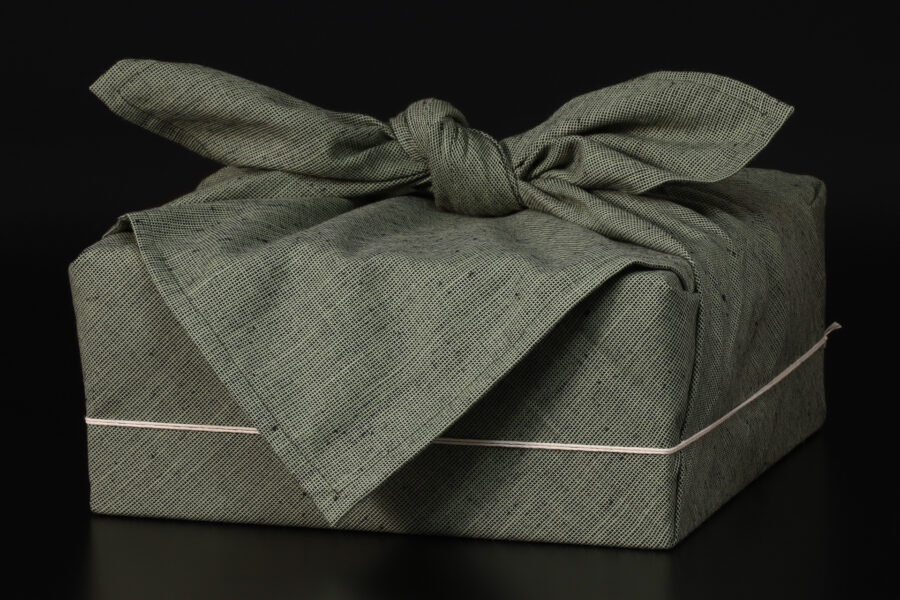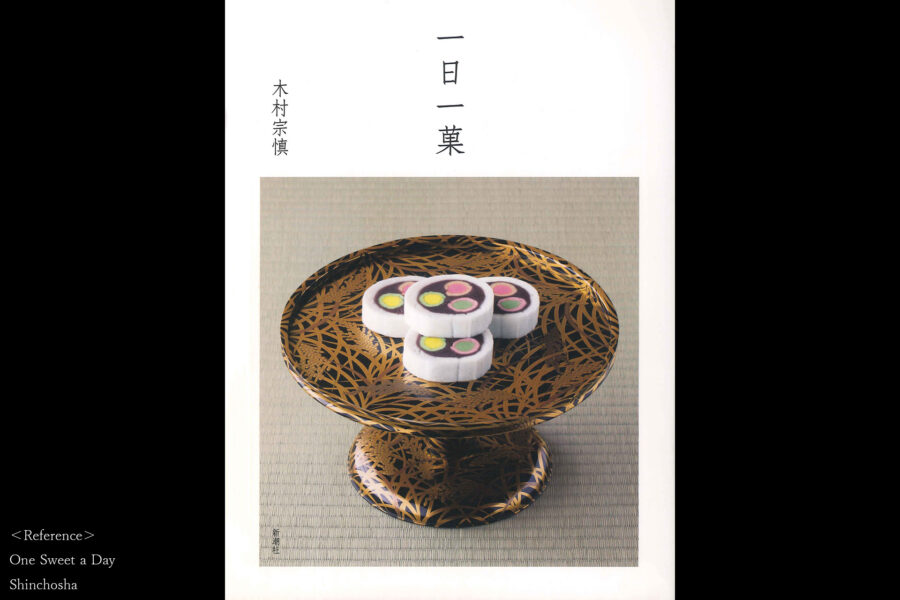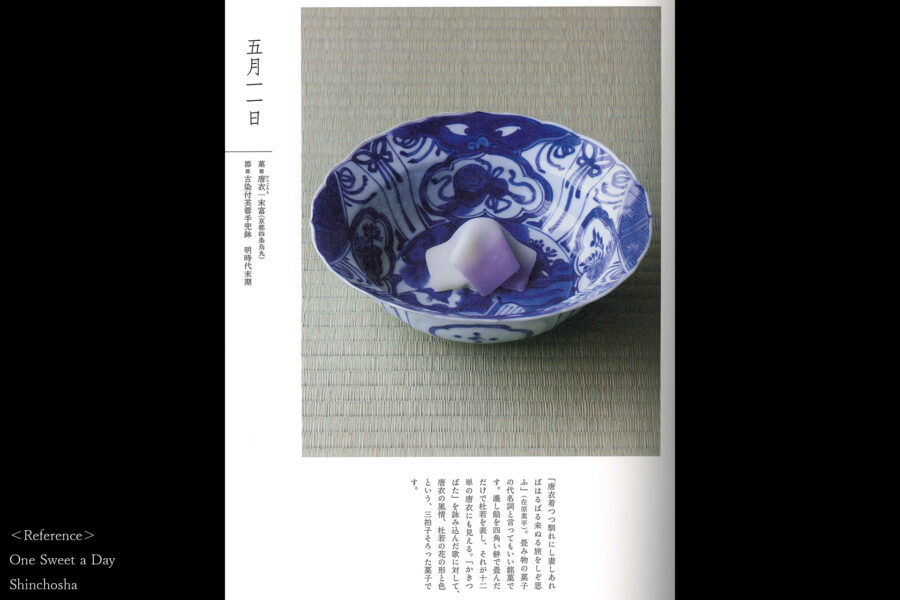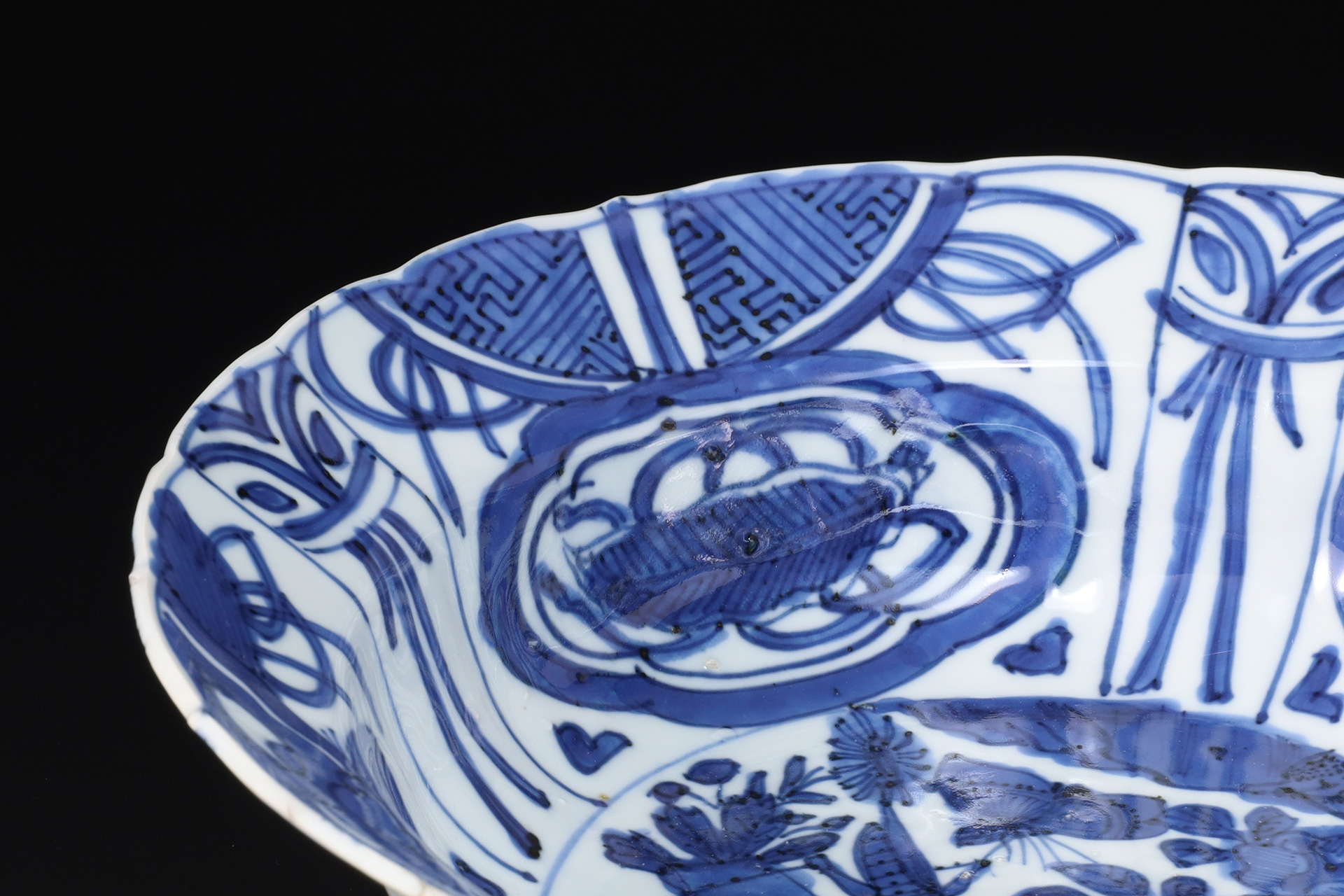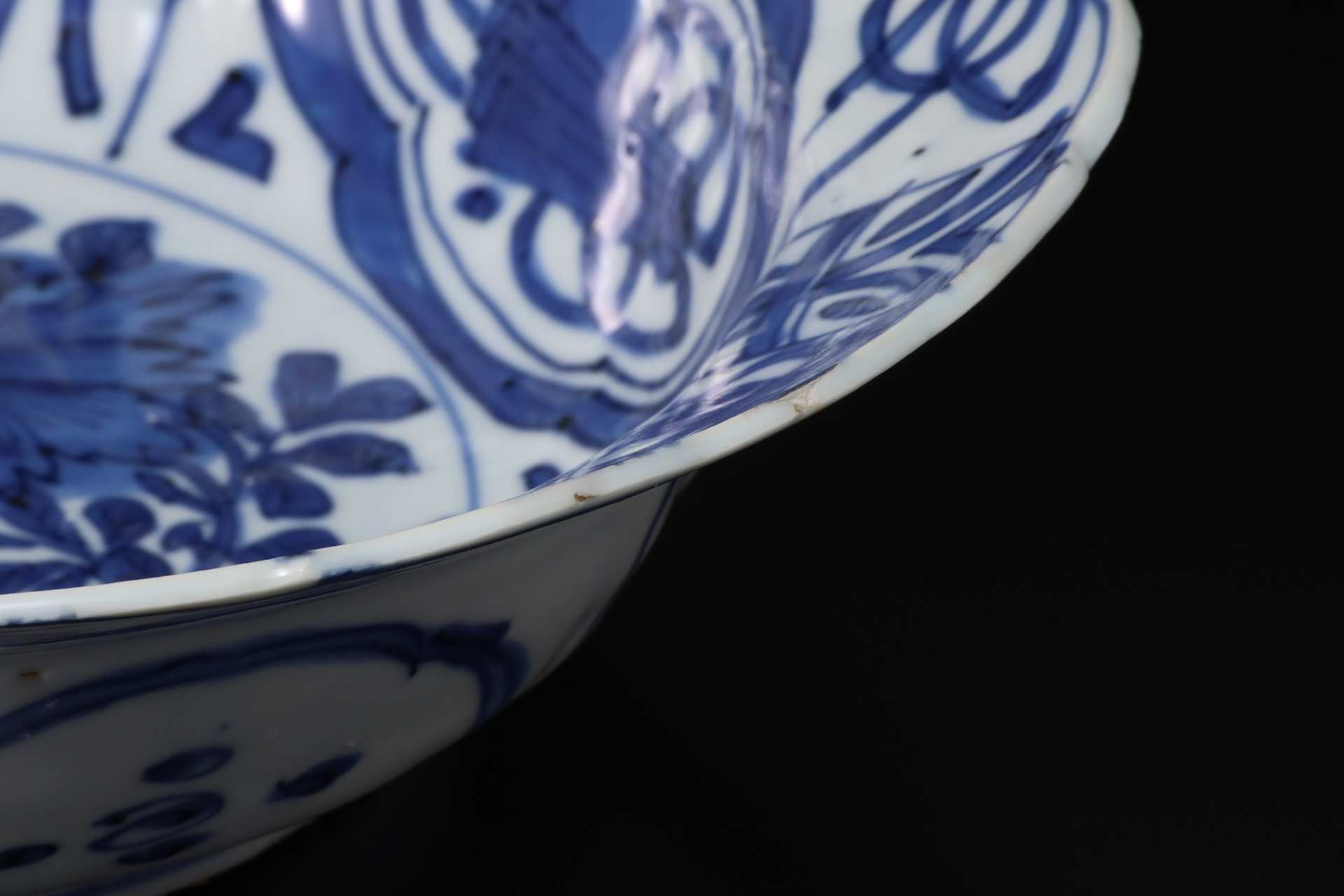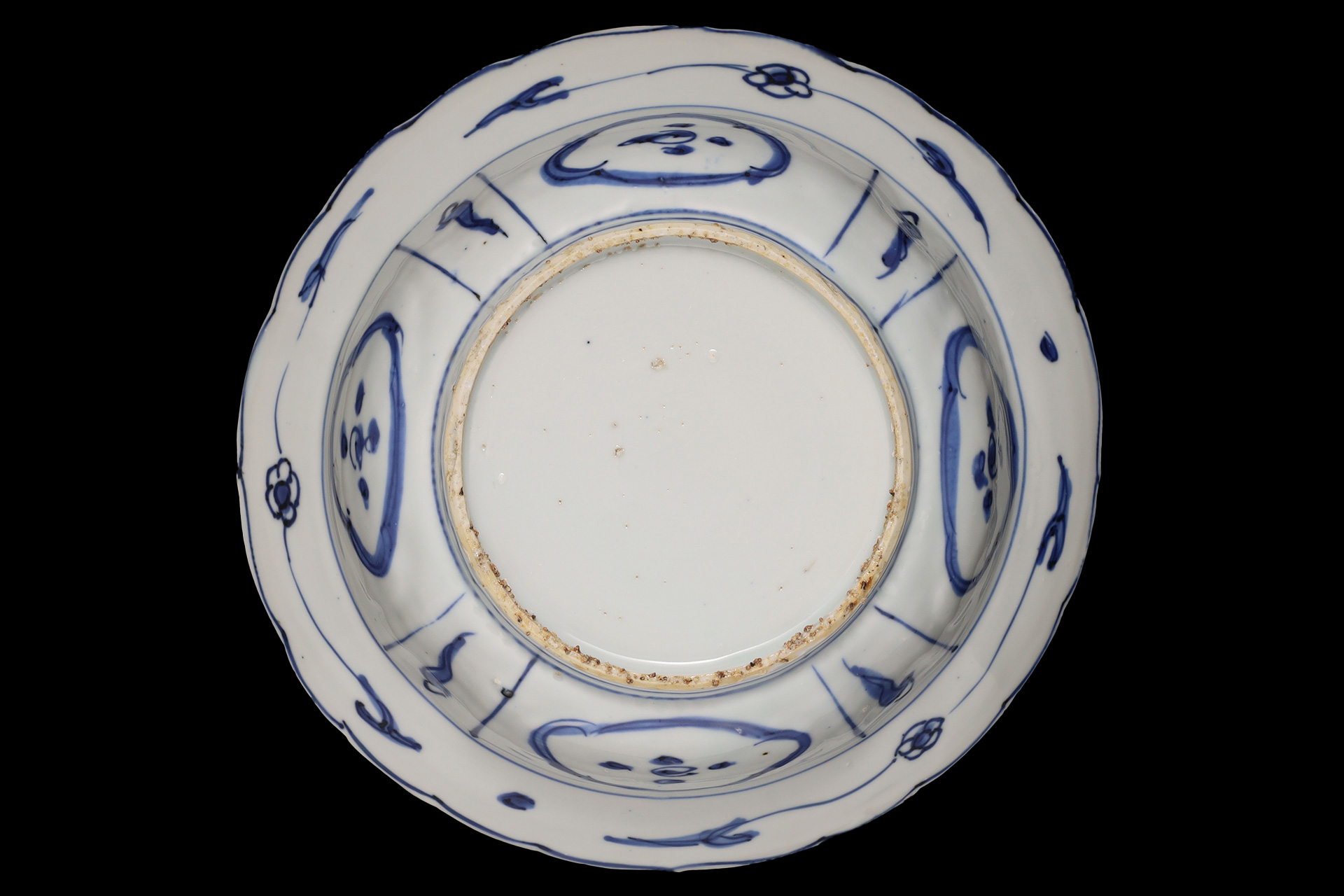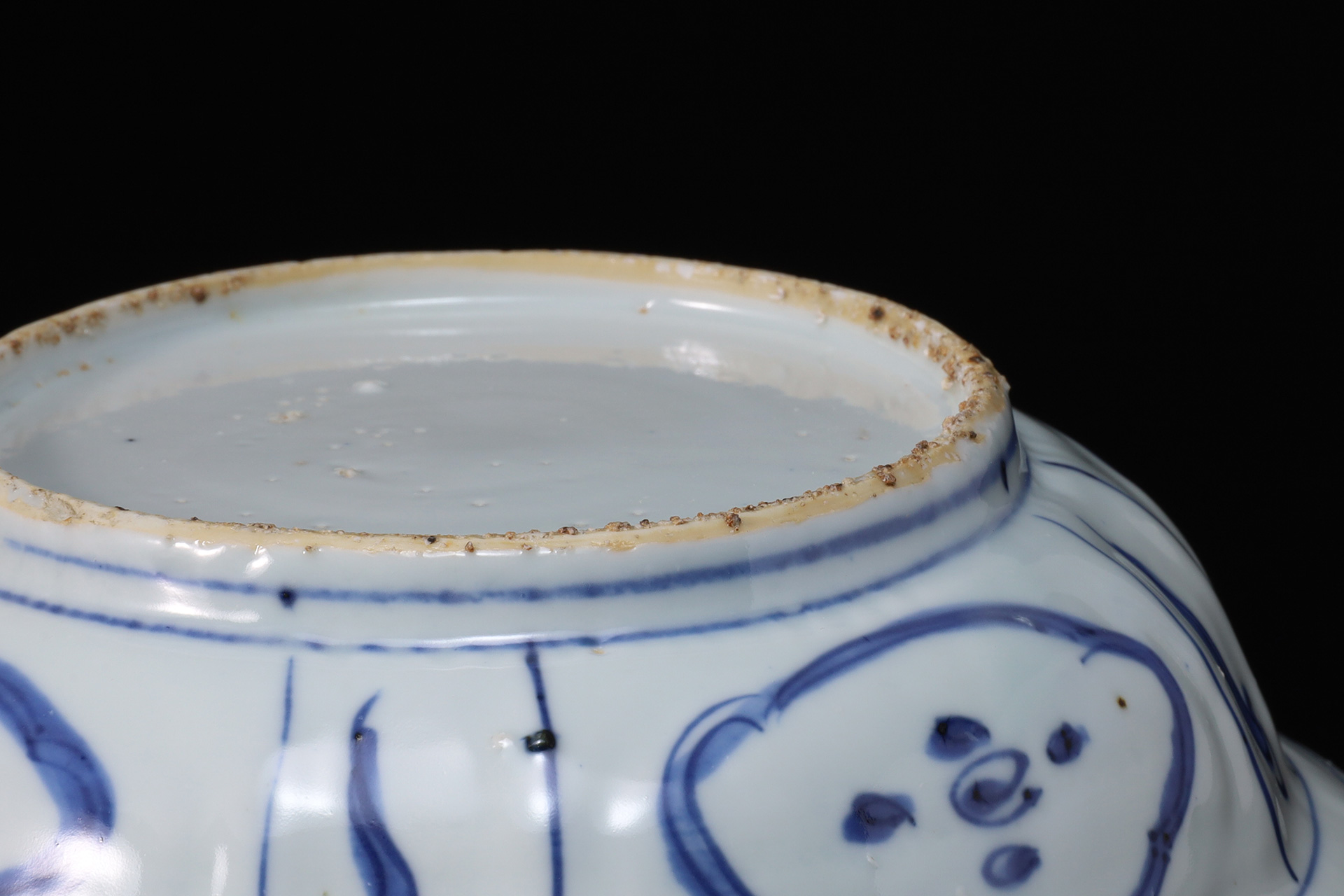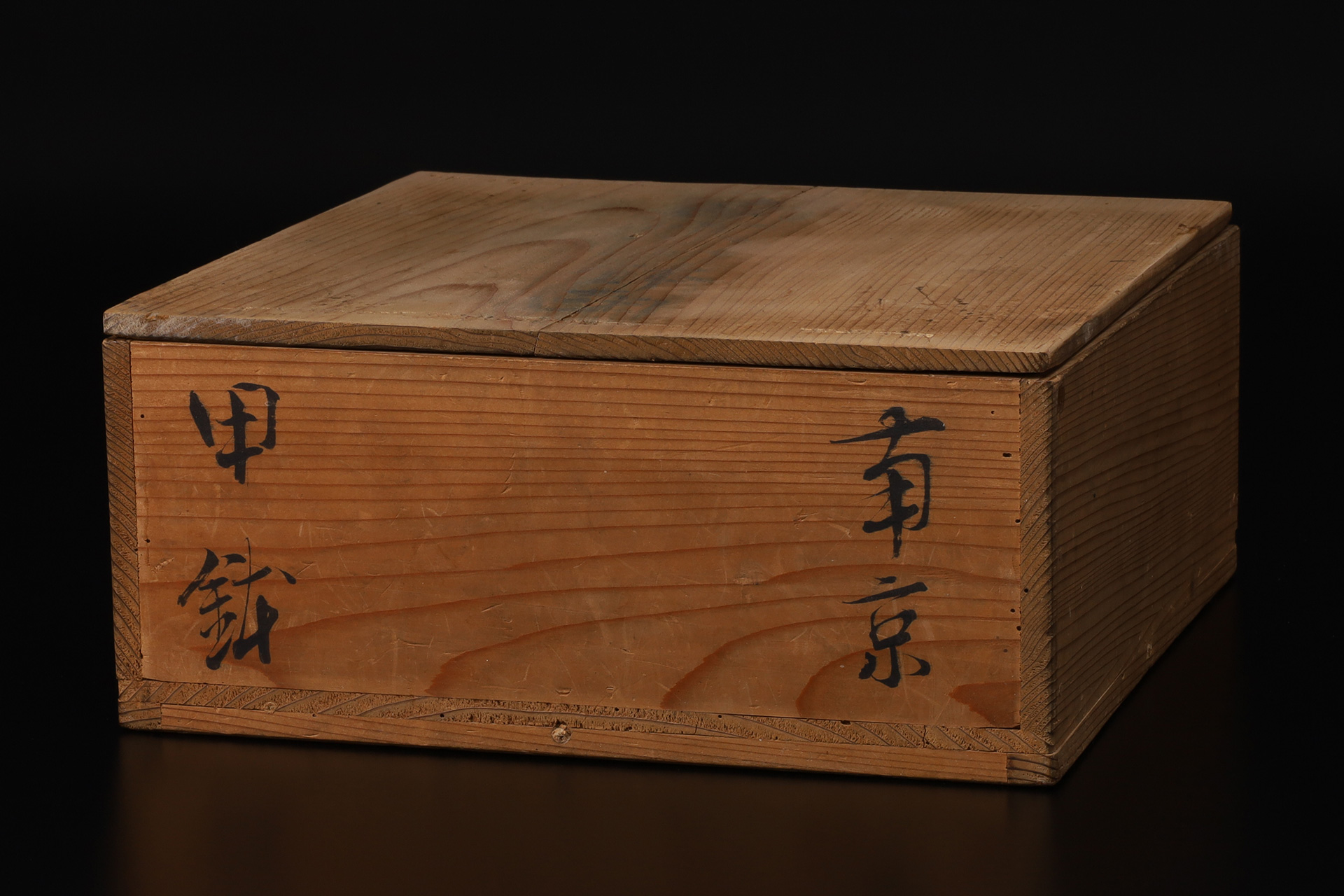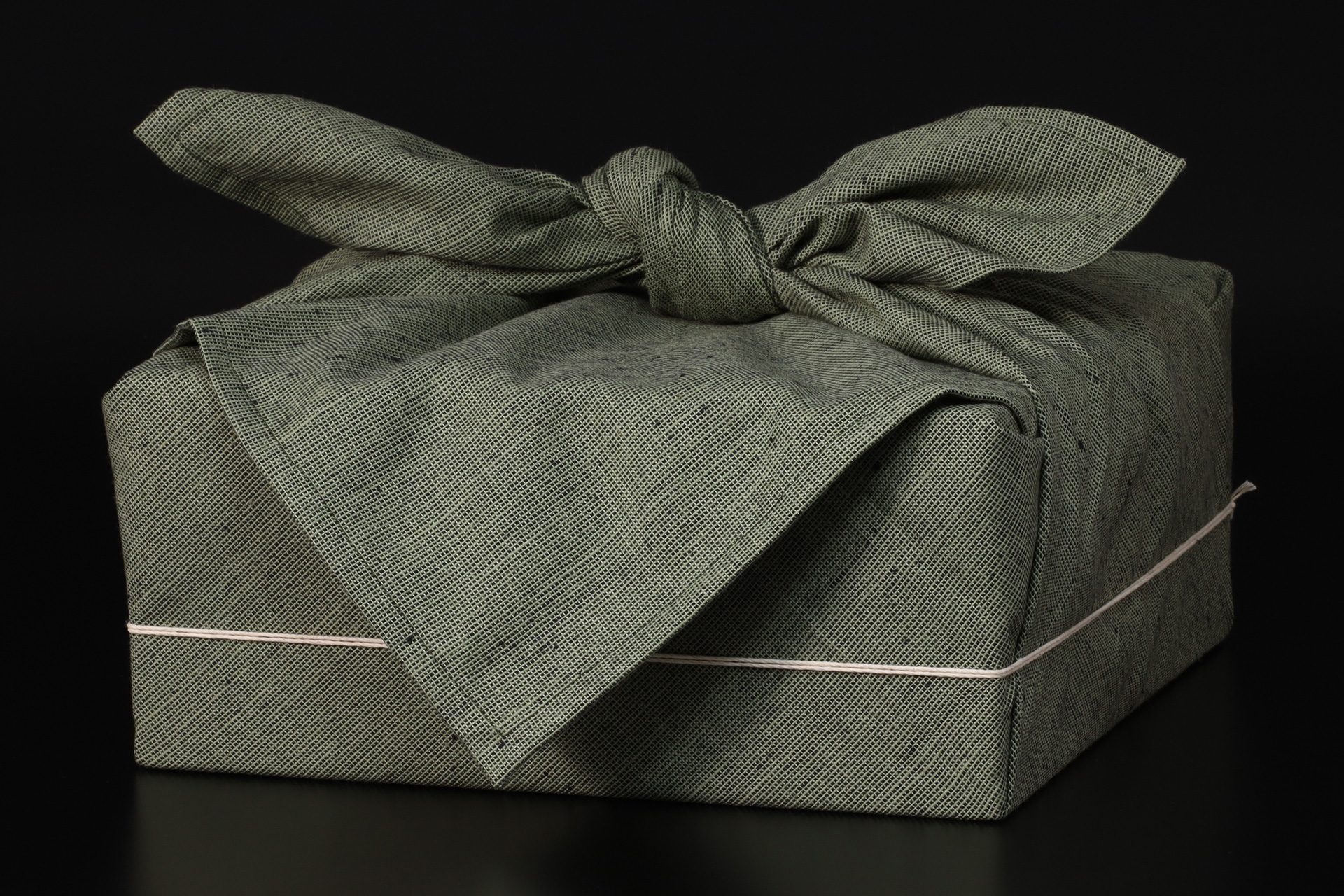This is the Ko-Sometsuke bowl, shaped by stamp-molding. Its graceful, thin-walled form and clear, luminous glaze highlight the refined sometsuke design, evoking a sense of cool elegance. Ideal for use as a confectionery bowl or shared serving bowl in kaiseki tea gathering, it brings quiet dignity to moments of hospitality.
Inquiry
- Product Code
- 250629-3
- Period
- Ming Dynasty
Early 17th century
- Weight
- 357g
- Diameter
- 21.1×20.6cm
- Height
- 6.4cm
- Base Diameter
- 10.5cm
- Accompaniments
- Cedar Box
- Condition
- Intact(There are mushikui on the rim)
Elegant base, perfect underglaze blue, and flawless firing the exemplary work.

Ko-Sometsuke
Ko-Sometsuke refers to a distinctive group of blue-and-white porcelain fired at the Jingdezhen kilns during the late Ming dynasty, particularly in the Tianqi era (1621–27). A distinct group of blue-and-white porcelains, known as Ko-Sometsuke, is cherished as a category of its own, characterized by unique stylistic features. In contrast to the Qing dynasty Shin-watari (New Imports), these works belong to the older tradition of Ko-watari (Old Imports), and many surviving examples were transmitted to Japan. Following the death of the Wanli Emperor, the Jingdezhen imperial kilns were shut down, and Jingdezhen private kilns assumed control over both production and distribution. Many potters who had once served in the imperial kilns moved to private kilns to sustain their livelihoods, leaving behind works that still reflect the refinement of official ware. A significant portion of these works are classified as Ko-Sometsuke and Shonzui. Ko-Sometsuke is broadly divided into two categories: tea pottery commissioned by Japanese tea masters, and everyday utensils for general use. As tea pottery, Ko-Sometsuke works were crafted in imitation of the thick-bodied forms favored by Japanese tastes, characterized by substantial walls and a bold, vigorous presence. In the late Ming dynasty, Japanese tea masters actively commissioned the production of novel tea utensils, seeking works that reflected their individual aesthetic sensibilities. Many Ko-Sometsuke works exhibit a phenomenon in which the glaze flakes away due to differences in shrinkage between the base and the glaze, exposing the underlying base. This effect, resembling insect bites, is poetically referred to as “Mushikui”. This phenomenon is most commonly observed along the rim and at the corner, where the glaze tends to be applied more thinly. Though typically regarded as a flaw in conventional ceramics, tea masters discerned in it a natural elegance, appreciating its rustic simplicity as a form of aesthetic expression.
https://tenpyodo.com/en/dictionaries/china-ming-qing/
Fuyo-de
Fuyo-de is a style of blue-and-white porcelain that originated at the Jingdezhen kiln during the Wanli Era (1573–1620). The design features a large circular frame at the center of the dish, surrounded by petal – shaped panels — a composition that evokes the image of a fully blossomed hibiscus flower, from which its Japanese name, Fuyo-de, is derived. As a representative design of Chinese porcelain made for export to Southeast Asia, the Islamic world, and Europe, Fuyo-de was chiefly produced during the late Ming Dynasty, particularly in the Tianqi and Chongzhen Era (1621–1644). While dishes are the most common form, kendis and bottles are also known examples.
Stamp-Molding
Stamp-molding is a traditional forming technique in which a wheel-thrown base is placed over a carved clay mold and gently struck to transfer the mold’s shape and decorative patterns. Using the perfectly round base formed on the wheel, this technique enables the creation of intricate contours such as floral rims. Because the wheel is turned while the vessel remains placed over the clay mold, the foot is trimmed into a circular shape.
